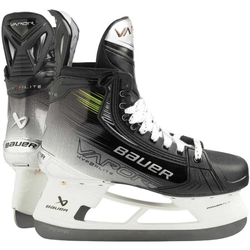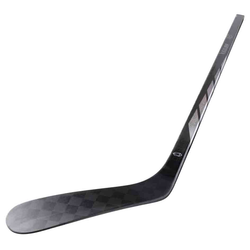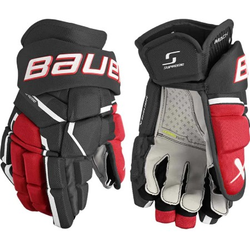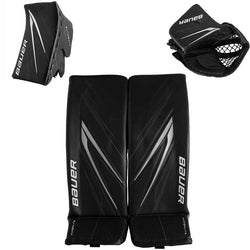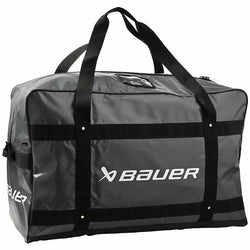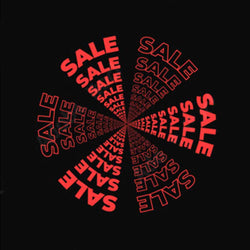Ice Hockey FAQs: Answering Your Questions
Are ice skates the same size as shoes?
To get the best fit for both male and female adult ice skates, select a skate box size half to one size below regular shoe size.
Unlike normal shoes, ice skates also come in different foot widths such as narrow fit, standard fit and wide fit.
To test fit for the optimum fit:
- Push your heel into the back of the skate and tie them up as you would for before the ice.
- Stand up straight and your toes should be brushing the end of the skates.
- Now bend your knees into the skating stance, your toes should no longer be touching the front.
What are the most comfortable ice skates?
The most comfortable skates are well-fitted skates. If your skate isn’t properly sized, this can uncomfortable and painful, plus impact on your performance.
To check for comfortable skates when you are choosing, stand up straight in them - with a suitable fit, your toe will be lightly brushing against the inside of the skate. When you lean forwards into a hockey stance, your heel should have moved back slightly. Now your toe shouldn’t be touching the front of the skate and there should be no excessive foot movement.
What are the best ice skates?
Here’s a list of the top quality, best ice skates on the market:
- Bauer Vapor 2X Pro Ice Hockey Skates
- Bauer Supreme 2S Pro Ice Hockey Skates
- CCM Jetspeed FT2 Ice Hockey Skates
- CCM Ribcor 80k Ice Hockey Skates
The best beginner skates are:
- Bauer NS Ice Hockey Skates
- Bauer NSX Ice Hockey Skates
- CCM Tacks 9040 Ice Hockey Skates
The more you are prepared to pay, the more advanced the skate you can get. However, the best ice skate for you depends on your level of play. Beginner’s don’t need a top of the range skate, and will benefit from a softer performance level skate - entry level skates are perfect for learning. For regular, more professional players, advanced level, stiffer skates are better, as they benefit from innovative technology to enhance performance.
What is the lightest hockey skate?
The most advanced, high level skates on the market will be the lightest hockey skates. They’re also the stiffest and most durable.
Lightweight skates are responsive on the ice, giving high control and increased acceleration. Some examples of the light hockey skates are:
Bauer Vapor 2X Pro Ice Hockey Skates
Bauer Supreme 2S Pro Ice Hockey Skates
CCM Jetspeed FT2 Ice Hockey Skates
CCM Ribcor 80k Ice Hockey Skates
Which skates are best for beginners?
Firstly, as a beginner, ensure you purchase a player skate - don’t buy a recreational skate, a speed skate or a figure skating skate; they aren’t specifically designed for ice hockey and are a different fit.
Any skates noted as ‘entry level skates’ are the best for beginners. They are fairly basic but importantly are not too stiff - enursing ease of movement on the ice. Even though a reasonable level of stiffness for support is needed for beginners, a very stiff boot could affect movement on the ice.
Some of the best skates for beginners are:
- Bauer NS Ice Hockey Skates
- Bauer NSX Ice Hockey Skates
- CCM Tacks 9040 Ice Hockey Skates
Are Bauer skates good?
Bauer is one of the most superior skate brands in the world. They cater for NHL, professional players right through to juniors and beginners. Bauer was established over 80 years ago and revolutionised the industry with the first ice skates to have the blade permanently secured to the boot.
Known for their comfortable skates, they also provide skates with some of the best stability and support for the ice.
You can get a very accurate skate fit with the MyBauer custom skates. Using innovative technology - the 3D Skate Lab Scanner creates a model of your feet, ensuring a one-of-a-kind skate built exactly to the shape of your foot.
What is the difference in Bauer skates?
There are 3 Bauer fits - Vapor, Supreme and Nexus. Here are the main differences in Bauer skates:
Vapor line = Low-volume skates that are the narrowest fit. These are best for those with a flat instep as they have a shallow heel pocket.
Supreme line = A medium/standard fit. They have a more standard anatomical fit and feel the most natural. They’re best for those with a neutral in step as they have a mid-heel pocket.
Nexus line = If you usually have a wide fit in regular shoes, we’d recommend the Nexus fit. This is a wide skate fit and these skates cater for higher insteps with their deep heel pockets.
You can bake your skates in all of these Bauer lines for an even better fit.
What does EE mean in hockey skates?
Ice hockey skates come in a range of width sizes. EE is the widest fit.
Generally for ice hockey skates the following letters correlate with different foot widths:
C = Narrow fit
D = Standard fit
R = Slightly wider than D
E = Wide fit
EE = The widest fit
What size ice skates do I need?
Firstly, find out the correct width and length.
Ensure you’re wearing the socks you usually wear to play hockey and trace around the edge of your foot onto paper (do so on a flat surface).
To get your foot length, measure the foot drawing from the furthest point of your toes to the back of your heel. Now use the conversion chart below to find the best size for you.

If you’re purchasing a skate online and you typically have no width issues with normal shoes, we would recommend choosing a regular/D width fitting.
If you have wide feet and have trouble with usual footwear widths, try the EE width option, as this is a wider fit.
Do figure skates run small?
Figure skates are usually 1 - 1.5 sizes smaller than your regular shoe size. However, we find many people are wearing the wrong shoe size in the first place.
To find your accurate shoe size, put on the socks you would wear ice skate in and trace around your foot onto paper or card. (Draw onto a flat, solid surface and avoid tracing under your foot).
Measure from the furthest point of your toes to the back of your heel on the drawing, in millimetres. This gives you your accurate foot length measurement.
Do ice skates run true to size?
Ice skates do not run true to your shoe size. Assuming your shoe size is correct, we would recommend selecting a skate box size half to one size smaller than your normal shoe size.
There are also extra measurements to consider - ice skates have different foot widths too such as narrow fit, standard fit and wide fit.
If you’re buying junior skates for children, select a skate box size 0.5 smaller than their usual shoe size. This allows for a bit of growth room, but you need to replace junior skates more regularly than adult skates because their feet grow rapidly.
How much does a pair of ice skates cost?
Hockey skates are available for many different price ranges. The more advanced skates cost more, but the choice depends on your level of play.
Entry level, beginner skates are often between £50 and £120.
Mid-level skates are usually between £120 and £350.
High level skates often start at £350 and can go up to approximately £780.
Should ice skates fit tight?
The perfect fit for ice hockey skates is tight and snug, with the least amount of room for any negative space. This takes some time to get used to as this is far more fitted than normal shoes.
There are a couple of effective ways to check your skates fit properly.
For junior players:
- Start with a loosened skate, so the foot can be pushed to the front of the skate and the toes brush the end.
- Look down the back of the skate.
- From here, check how many fingers you can slide between the hockey skate and the heel.
- If you can slide just one finger down and no more, this is the ideal fit.
For senior players:
- This should be a snug fit as there is no need for growth room.
- Push the heel into the back of the skate and tie the laces as you would for skating on the ice.
- Stand up straight and now your toes should just brush the end of the skates.
- Bend your knees into the skating stance, now your toes should no longer be touching the front.
Why do ice skates hurt your feet?
Ice skates shouldn’t generally hurt your feet. The most common reason for painful feet is an ill-fitting pair of ice skates. Skates not properly sized to you are often uncomfortable and painful. A skate that doesn’t fit correctly can cause blisters, damage the vital support in the boot. This isn’t ideal as it can also impact on performance and enjoyment of the game.
Heat fitting is a great way to help you avoid painful ice skates. The process helps to break in your skates quickly so they are less painful, and fit the best they can.
The heat moulding process helps to form the firm top part of the boot around the shape of your foot. This shortens the break in period, and makes sure it’s the perfect snug fit.
How do you take care of ice skates?
Take care of your skates with simple maintenance, starting with keeping your boots dry after use. Wipe down the inside and outside of your skates to stop moisture causing mould on the boots. Open up your boots as much as possible to dry them out - undo the laces and pull the tongue forward. If possible, try to let them dry out in a room, rather than in a skate bag.
Blade care is also very important so make sure you take care of the edges. Don’t walk on the ground with your skates on and wear blade guards immediately after stepping off the ice. Again, you want to keep these dry so give them a wipe and let them dry at room temperature so they don’t rust. It’s also a good idea to get your blades sharpened by a professional every now and then.
It's important to take skates off correctly by unlacing properly, rather than using the tendon guard to push off the skate.
How long does it take to break in ice skates?
The amount of time it takes to break in ice skates can vary, but it’s usually between 6-10 hours of ice time.
Heat moulding or baking your skates often helps to shorten this break-in period.
How much are ice skates?
The cost of ice skates varies depending on your usual weekly length of time on the ice and your level of play. There are hockey skates available for lots of different price ranges.
Entry level skates range between £50 and £120.
Mid-level skates range between £120 and £350.
High level skates often start at £350 and can go up to approximately £780.
Entry level skates have basic features but aren’t too stiff, so they make beginner’s movements on the ice easier. As expected, the most expensive are advanced, top performance level skates, benefitting from the most innovative features.
The more expensive skates also use more advanced materials for weight reduction, improved stiffness and protection.
What is the toe pick for on ice skates?
One of precision features on a figure skate is the toe pick. This helps skaters to reach new heights during jumps and spins on the ice.
They are the jagged teeth on the front of the blade on a figure skate - ice hockey skates don’t have toe picks, differentiating the two. The toe picks are utilised by skaters during spins, footwork and jumps. Toe picks are larger on blades for advanced skaters compared to skates for recreational, beginner and intermediate level players.
Should ice skates be a size bigger?
Ice skates should not be a size bigger, in fact, the best fit would be to select a skate box size half to one size below your regular shoe size.
Some of the top brands such as CCM and Bauer use state of the art software to scan your foot, producing a model that is the exact size of your foot. These customised services give the most accurate skate size for you. This eliminates any loss of energy and gives you maximum comfort and control.

